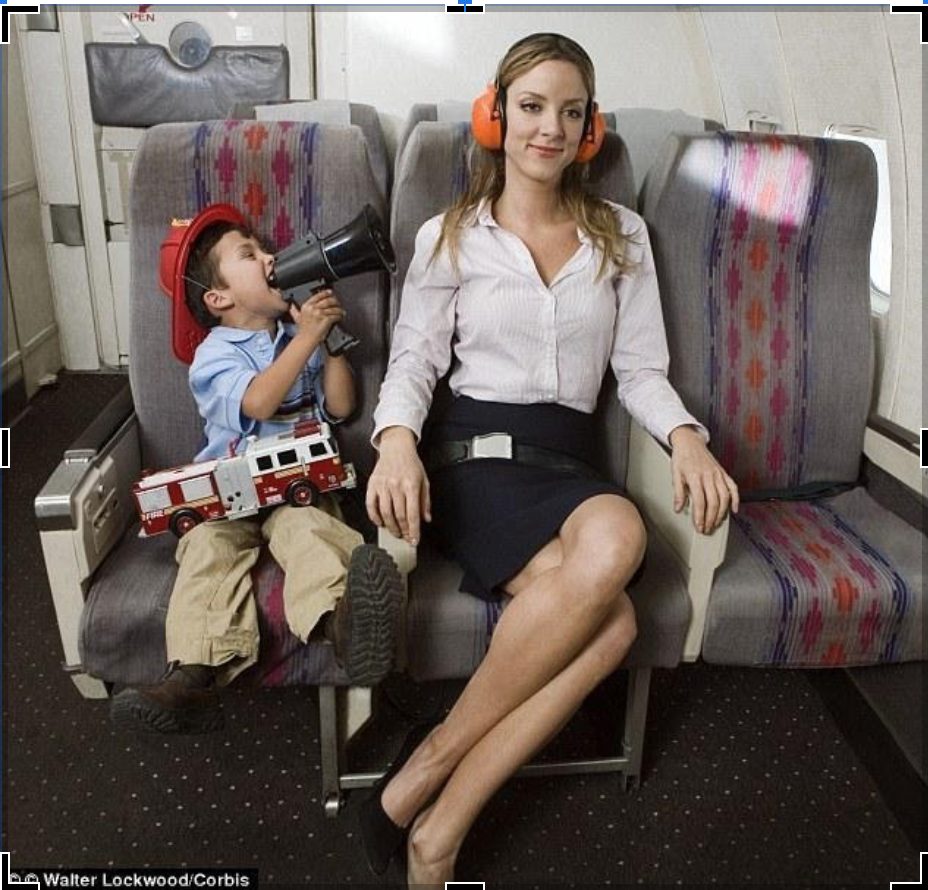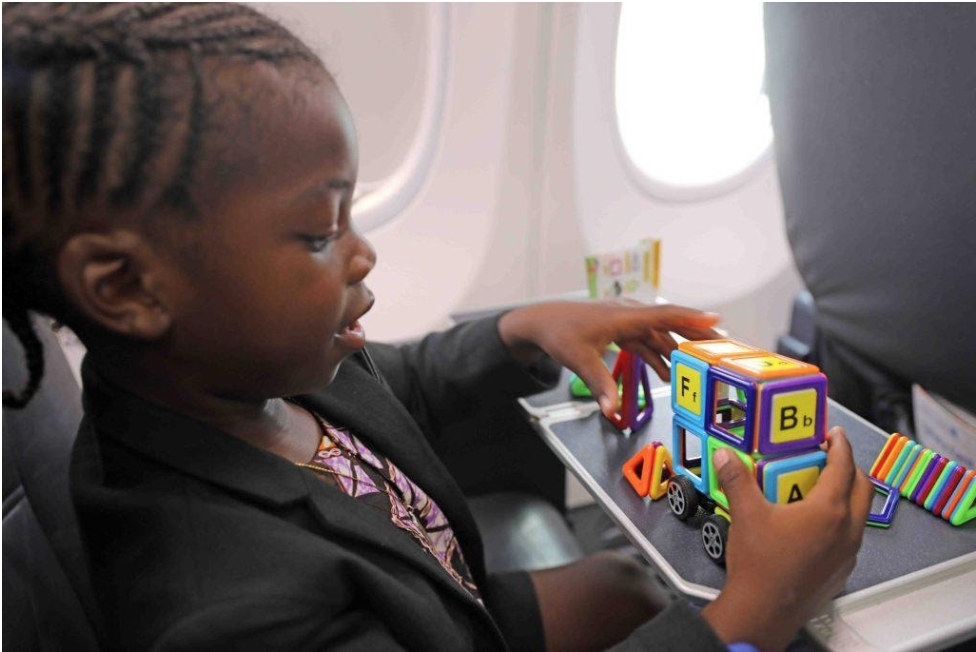
Taking a long road trip with young children is a challenge, to be sure. And you need to plan on much more time than simply the mileage to arrive at your destination. But the good news is you can stop, let those little bodies run about and eat their favorite foods.
How about that long-distance flight? It’s an entirely different “ball game” and also depends upon what you consider long distance. East coast to west coast? About 3 ½ – 4 hours. The U.S. to Australia? About 19 hours, depending on the departure city. Obviously, international flights require more survival tips than domestic.
Here are some that should help make this huge challenge at least bearable, if not somewhat pleasant.
-
Get Documents Ready
Children, even infants, must have passports. And for some domestic flights, they may need birth certificates. Copies are okay, and a passport will suffice for a birth certificate.
-
Obviously, a Carryon with Toys/Activities
A few of their familiar favorites will do. But add new toys too. Some ideas are pegboards (or magnetic), coloring books, re-usable sticker books, small Etch-a-Sketch, and, of course, a small electronic device for movies and gaming. There are amazing YouTube videos for children as young as 18 months, but you already know that. Download what you can in advance.
-
Take That Car Seat Aboard
Most airlines allow this, but be sure to check first. Putting your little one in this seat “contains” them and adds emotional comfort. They are more likely to fall asleep easier – sort of like they do on long drives. And their favorite “bedfellow” helps too. Attach small toys to that car seat so they stay in place, and have some substitutes that you can tie on as well.
-
A Controversial but Possibly Necessary Item
People often look critically at a parent who has a toddler on a child harness. But if you have an active risk-taker who sees an entire airport as a new playground, and your arms are burdened with an infant and/or carryon bags, go for it. Nothing is harder than trying to run after an escaping child or, worse, losing him/her. Give yourself some peace of mind during this stressful time.
-
They Have to Move
Walking a child up and down the aisle of an airplane is not ideal, but you have no other choice. By the time they are eight or so, they may be okay with their “screens” for long periods of time, but not so when younger. Bite the bullet and don’t worry about other passengers that my think critical thoughts.
-
Snacks – Keep Control
Do not allow a child to have his/her own snacks for the taking. First of all, you want to consider air sickness. If a child is going to suffer from this, it will probably show up early in the flight. Pack their favorite snacks, but stay in charge of dispensing them. International flights serve meals but don’t plan on your child`s liking them. You can find somewhat healthy yet filling snacks (peanut butter crackers, etc.) that can substitute.
-
Those Ear Problems
Very young children don’t understand why their ears hurt during ascent and descent. The key is to get them to swallow as much as possible. For infants, bottles and pacifiers will help, as will those baby snacks that dissolve in the mouth and generate “spit” that must be swallowed. For toddlers and older kids, try candy that must be chewed – this forces saliva production and swallowing.
-
Don’t Scrimp on Seating
Yes, children under two can board without their own seats on most airlines. But think about this. Do you want an infant in your lap or your spouse’s/partner’s lap all the time? No, you don’t. Purchase that extra seat so you can have a car seat and/or just some extra space. You have to consider your comfort level too. The more comfortable you are, the less irritable you are.
-
Plan for the Mess
Long flights mean spilled snacks. They can also mean air sickness and spills on clothing. You will need to have at least one change of clothing for each child and a large enough plastic bag to stuff those soiled clothes in. And of course, you already know the drill regarding wipes and small stain-removing pens. Hand sanitizers go without saying. And changing diapers? That’s a real joy! Have plastic bags for the dirty ones before you dispose of them in bathroom receptacles.
-
Some Additional Precautions/Tips
Being well-prepared in advance is critical to long flights with kids.
- Check with the airline about any prohibited items that you may not be able to board with. You will need to find substitutes if necessary.
- Hide a few new small toy items in your purse, so you have small diversions when necessary
- Nap when they do. You have to keep your mental strength up too. If your child(ren) should fall asleep, take the time to sleep too. If you are traveling with a spouse or adult partner, trade-off sleep times.
- Kids will experience jet lag from international flights. Make sure that you have studied this and have plans in place to deal with it.
In the End…
Long-distance flights with kids are no “walk in the park.” Prepare yourself to be stressed, anxious, irritable, and frustrated. But these tips should give you some ammunition to minimize all of these things. And remember – “this too shall pass.”
Author Bio: Erica Sunarjo is a translator and interpreter for The Word Point. In her many travels for work, she often takes her kids along. As an experienced traveler with small ones, she obviously has first-hand advice.
The post Surviving Long-Distance Flying with Children appeared first on The Baby Sleep Site – Baby / Toddler Sleep Consultants.







